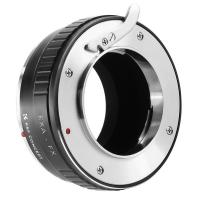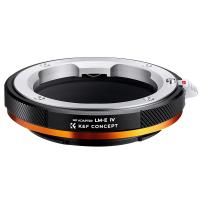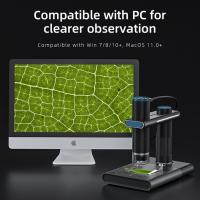Can You See Germs With A Microscope ?
Yes, germs can be seen with a microscope. Microscopes are powerful tools that allow us to see objects that are too small to be seen with the naked eye. Germs, also known as microorganisms, are tiny living organisms that can cause disease. They include bacteria, viruses, fungi, and protozoa. These microorganisms are so small that they cannot be seen without the aid of a microscope. With a microscope, scientists can observe the structure and behavior of germs, which helps them to understand how they cause disease and how to develop treatments to combat them.
1、 Microorganisms
Yes, you can see microorganisms, including germs, with a microscope. Microorganisms are tiny living organisms that are too small to be seen with the naked eye. They include bacteria, viruses, fungi, and protozoa. Microscopes are essential tools for studying microorganisms, as they allow scientists to observe their structure, behavior, and interactions with other organisms.
The latest point of view on microorganisms is that they play a crucial role in maintaining the health of our planet and our bodies. While some microorganisms can cause disease, many others are beneficial and necessary for our survival. For example, bacteria in our gut help us digest food and produce vitamins, while fungi in the soil help plants grow and recycle nutrients.
Advances in microscopy technology have allowed scientists to study microorganisms in greater detail than ever before. Electron microscopes, for example, can magnify objects up to 10 million times, allowing scientists to see the intricate structures of viruses and bacteria. Fluorescence microscopy, which uses fluorescent dyes to highlight specific parts of a cell, has also revolutionized our understanding of how microorganisms function.
In conclusion, microorganisms, including germs, can be seen with a microscope. While some microorganisms can cause disease, many others are essential for our health and the health of our planet. Advances in microscopy technology continue to expand our knowledge of these tiny but mighty organisms.

2、 Microscopy
Yes, you can see germs with a microscope. Microscopy is the science of using microscopes to view objects that are too small to be seen with the naked eye. Germs, also known as microorganisms, are typically too small to be seen without the aid of a microscope.
Microscopes have been used for centuries to study microorganisms, and they continue to be an essential tool in microbiology today. With advances in technology, microscopy has become even more powerful, allowing scientists to see microorganisms in greater detail than ever before.
One of the latest developments in microscopy is the use of super-resolution microscopy, which allows scientists to see structures that were previously too small to be resolved with traditional microscopy techniques. This has led to new insights into the structure and function of microorganisms, and has opened up new avenues for research in microbiology.
In addition to studying microorganisms, microscopy is also used in a wide range of other fields, including materials science, nanotechnology, and medicine. For example, electron microscopy is used to study the structure of materials at the atomic level, while confocal microscopy is used in medical imaging to visualize tissues and cells in three dimensions.
Overall, microscopy is a powerful tool that has revolutionized our understanding of the microscopic world, including the study of germs and other microorganisms.

3、 Germ theory
Can you see germs with a microscope? Yes, you can. The development of the microscope in the 17th century allowed scientists to observe microorganisms, including bacteria and viruses, for the first time. This led to the discovery of the germ theory of disease, which states that many diseases are caused by microorganisms.
The germ theory has been widely accepted and has revolutionized medicine and public health. It has led to the development of vaccines, antibiotics, and other treatments that have saved countless lives. However, there have been some recent challenges to the germ theory.
One of the challenges is the discovery of the microbiome, which is the collection of microorganisms that live in and on the human body. These microorganisms play a crucial role in maintaining our health and are not always harmful. In fact, some studies have suggested that disrupting the microbiome can lead to health problems.
Another challenge is the rise of chronic diseases, such as heart disease and cancer, which cannot be explained solely by the germ theory. These diseases are thought to be caused by a combination of genetic, environmental, and lifestyle factors.
Despite these challenges, the germ theory remains a fundamental concept in medicine and public health. It has led to many important discoveries and has saved countless lives. While our understanding of microorganisms and their role in health and disease continues to evolve, the germ theory remains a cornerstone of modern medicine.

4、 Pathogens
Yes, you can see germs with a microscope, including pathogens. Pathogens are microorganisms that can cause disease in humans, animals, and plants. They include bacteria, viruses, fungi, and parasites. Microscopes have been used for centuries to study microorganisms, and they continue to be an essential tool in microbiology.
With the development of more advanced microscopes, scientists have been able to study pathogens in greater detail. For example, electron microscopes can magnify objects up to 10 million times, allowing scientists to see the smallest details of pathogens. This has led to a better understanding of how pathogens cause disease and how they can be treated.
However, it is important to note that not all germs are pathogens. Many microorganisms are harmless or even beneficial to humans. For example, the human body is home to trillions of bacteria that help with digestion and protect against harmful pathogens.
In recent years, there has been a growing interest in the microbiome, which refers to the collection of microorganisms that live in and on the human body. Scientists are using advanced techniques to study the microbiome and its role in health and disease.
Overall, microscopes have played a crucial role in our understanding of germs and pathogens. As technology continues to advance, we can expect to learn even more about these tiny organisms and their impact on our health.
































There are no comments for this blog.